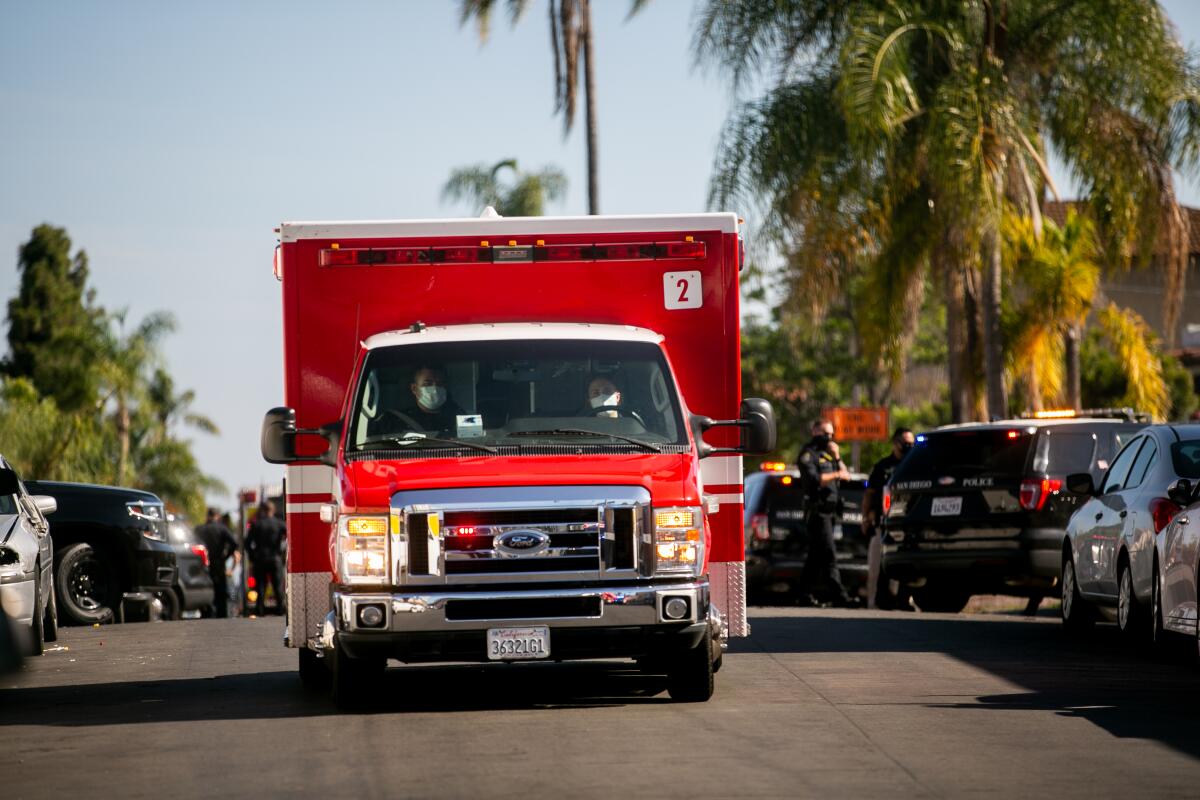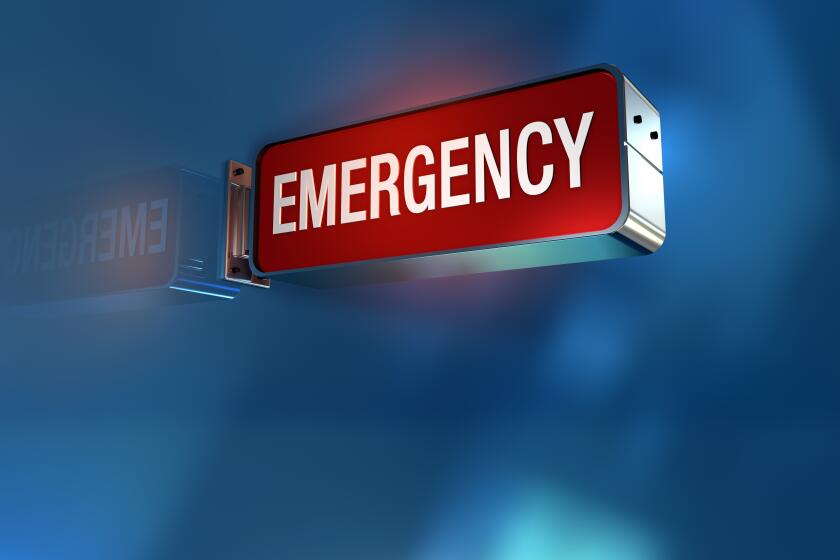Opinion: Why that ambulance racing through L.A. traffic may not be going to a life-or-death emergency

The lights and sirens of emergency medical services are pervasive in the United States. Not only are our screens saturated with them, but it’s hard to go far in any large city without seeing an ambulance race by.
The public often assumes that the vehicle is on its way to a life-or-death emergency. But those who have worked in EMS know that is overwhelmingly not the case.
What started in the 1960s as an answer to rapidly increasing carnage on the nation’s freeways has evolved into a complex subspecialty of American healthcare. Early research on the field demonstrated that prompt emergency medical care benefits a small subset of patients, namely those who suffer cardiac arrest and certain kinds of severe trauma. The hugely successful marketing of the 911 system also drove the expansion of EMS.
Opinion: Same hospital, same injury, same child, same day: Why did one ER visit cost thousands more?
A Bay Area 4-year-old was treated for a common joint injury twice in one day. But the bills for the two hospital visits were thousands of dollars apart.
Between 1980 and 2010, while the U.S. population increased 36%, the country’s fire departments experienced a 267% explosion in EMS runs. The number of life-threatening emergencies obviously didn’t grow that rapidly, so what happened?
The EMS system got too good at its job — not the job of saving lives so much as the job of showing up in a matter of minutes at any time, day or night, for anyone who dials those three numbers. As affordable access to healthcare continued to erode, 911 was a reliably, readily available substitute.
In its fifth decade, the modern EMS system doesn’t look much like it did when it was formed. In most cities, it’s become a catchall for everything that can fall through the cracks in our healthcare networks: communities with poor primary care access, homeless populations, and people with mental illnesses and substance abuse problems, to name a few.
I see patients who need prescriptions but can’t find them and patients who need mental health care but can’t get appointments. The healthcare system is collapsing all around us.
All these people need and deserve access to healthcare. The trouble is that EMS systems were not designed to handle this volume or breadth of patients. While emergency medical services are less expensive than byzantine hospital systems, they are by no means cheap.
EMS is a labor- and equipment-intensive industry that struggles to recruit personnel, collect insurance reimbursement and, more recently, transfer patients to emergency rooms in a timely fashion. As a result, its ability to respond to any rapid increase in demand for care is very limited.
Take the Los Angeles Fire Department, which responded to nearly half a million calls for service in 2022 — a 10.3% increase from 2018 — for a ratio of 1 response per 7.8 residents. To accomplish this feat, the department staffs approximately 150 ambulances per day out of its 106 fire stations. While that sounds like a lot of resources, the truth is that it’s only enough to cover 0.004% of the population at any given time. This is just one example of the vulnerability of our overburdened EMS system.
Further exacerbating the difficulties in providing EMS coverage, use patterns are notoriously uneven; certain neighborhoods rarely use the system, while others rely on it for most of their healthcare. But it can’t just be removed from neighborhoods that don’t use it much.
Unhoused people are an extreme example of these divergent patterns. They represent only 0.8% of the population but account for 10.2% of the city’s EMS calls, using the service at 14 times the rate of housed residents.
Recognizing that it’s hard to improve something you don’t measure, the LAFD has been a leader in EMS research. One example was an evaluation of more than 33,000 calls for abdominal pain over a three-year period to see how many turned out to be life-threatening emergencies. The answer, astoundingly, was just seven.
Los Angeles is not alone; the staggering growth of nonemergency calls has plagued services around the country. A 2021 study of nearly 6 million 911 calls involving nearly 1,200 U.S. agencies found that while 86% of the responses sent crews racing with lights and sirens on, less than 7% resulted in a potentially lifesaving intervention.
The repercussions of inadequate healthcare run rampant in EMS calls and emergency departments. Only 8% of Americans 35 and older receive all recommended preventive services and screenings, and 1 in 8 of those ages 12 to 65 doesn’t have health insurance. Complications from diabetes, uncontrolled hypertension, obesity and alcohol use overwhelm the healthcare system in volume and cost. According to the Centers for Disease Control and Prevention, 90% of U.S.healthcare spending goes to treat chronic conditions.
As EMS has been pulled into filling the gaps, it’s become clear that it’s not sustainable or effective in that role. Meanwhile, its ability to respond effectively to life-threatening emergencies has been strained.
Many local leaders are aware of this and looking for answers. The strategies they have deployed include referring nonemergency calls to nurse hotlines, employing alternative transportation to sobering facilities and urgent care clinics, and bringing mental health practitioners to patients. Much effort has been expended trying to discourage nonemergency 911 calls with minimal success.
It’s become apparent that the answer isn’t dissuading the public from calling 911 as much as it is changing what happens when the calls come in. One stumbling block has been accurately identifying non-life-threatening conditions. EMS systems have generally opted to err steeply on the side of tolerating nonemergency calls to avoid liability. Refining dispatch algorithms and integrating physician and nurse assessment may help alleviate the impulse to just send an ambulance.
Ultimately it will be necessary to view 911 centers as healthcare hubs and ambulance transport as just one spoke for delivering it. The ability to triage patients as an emergency room does and send the appropriate response — whether an ambulance, taxi or mobile laboratory — may help conserve resources.
Above all, any large-scale solution will require systemwide primary care access for 911 callers. The ultimate goal — one our modern EMS system has largely lost sight of — is to help people get the most appropriate and effective care.
Jon Nevin is a battalion chief for a Southern California fire department and a longtime emergency medical services practitioner and researcher.
More to Read
A cure for the common opinion
Get thought-provoking perspectives with our weekly newsletter.
You may occasionally receive promotional content from the Los Angeles Times.












